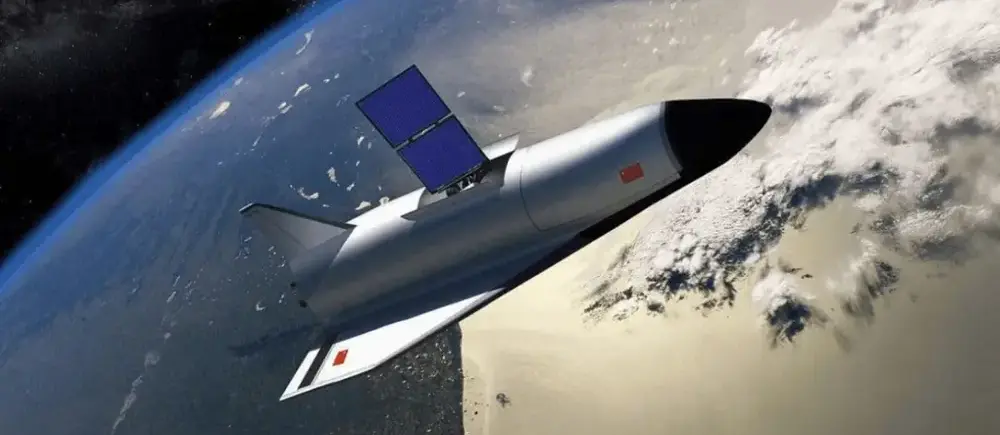Chinese scientists have achieved certain successes in the development of theories, materials, technologies and processes that promise to fundamentally change the aerospace field and beyond. It is a hypersonic transport that can initially use electromagnetic acceleration. The technology can also be applied in hypersonic trains in vacuum tunnels.
There are currently a number of experimental solutions in China that form the basis for modeling and experiments. As reported in a recently published article in the peer-reviewed journal Acta Aeronautica, the processes of acceleration and separation of an aircraft from a rail-powered catapult were investigated in a wind tunnel and subjected to computer analysis. The developers of the project emphasize that they are not aware of similar studies being carried out in the USA or other countries. By the way, the analysis of the processes at the moment when the aircraft leaves the hypersonic catapult is one of the most important processes of the launch process.
US Navy aircraft carriers use steam catapults to launch aircraft. Engineers encountered difficulties trying to switch to electromagnetic catapults. In particular, aircraft carriers of the “Gerald R. Ford” type were supplied with electromagnetic catapults. They reportedly have a fairly high failure rate. Previously, NASA abandoned the project to develop an electromagnetic catapult to replace the first stage of rockets. At that time, it was believed that this would require speeding up the second stage to 700 km/h. After working on a similar project in China, scientists concluded that the cosmonaut needed to be accelerated to a higher speed in order to leave the first stage.
In 2016, China began developing the “Tenyun” project, a reusable aerospace platform with a hypersonic booster and spacecraft. As an option, the 50-ton spacecraft is also considered to be accelerated on a massive electromagnetic launch pad, increasing the ship’s speed to Mach 1.6 (1,960 km/h). After the spacecraft separates from the catapult, it starts its engines and accelerates to seven times the speed of sound. In this way, great savings in fuel will be achieved.
The moment of separation of 50 machines larger than a Boeing 737 aircraft will be critical for the system, and numerous experiments in the wind tunnel have been dedicated to this. As scientists discovered, when a space plane breaks the sound barrier, a series of shock waves are launched on the catapult between the plane and the ground. The lower part of the device begins to be subjected to a large number of shock loads due to the reflection of shock waves from the near surface of the earth. These shock waves disrupt the airflow, creating subsonic airflow foci between the apparatus, electromagnetic slide and rail.
When the sled reaches the set speed, it suddenly stops and the spacecraft separates. The chaotic airflow initially supports the device, but after four seconds the flow turns into thrust, as testing in the wind tunnel showed. At this time, a brief period of weightlessness would occur for the hypothetical passengers and crew of the ship. However, as the distance between the aircraft and the runway increases, the density of the air flow decreases until it disappears completely. By this time, the aircraft’s engines should have reached the required thrust and created conditions for gaining altitude.
Modeling showed that the spaceplane’s design required reinforcement in places most prone to aerodynamic shocks. But in general, this approach is considered safe and feasible, as scientists write in their article. It is clear that the proposed approach will be tested in practice. Two experimental runways have already been built for this purpose. Indicative rails were built not only for the aviation project, but also for the development of trains on magnetic pads. One of these is a 2 km vacuum tube built by the China Aerospace Science and Industry Corporation (CASIC) in the Datong industrial center of Shanxi province, which will allow maglevs to be driven at speeds of up to 100 km/h in a low-vacuum tube. In the future, the length of the pipe will reach 60 km, which will allow the train to accelerate to 5000 km/h. On the track, the possibilities of electromagnetic acceleration, control and other things that will also be used in catapults used in space launches will be tested.
A similar facility has been established in Jinan, capital of eastern Shandong province, where similar high-speed electromagnetic sled experiments are being conducted under the supervision of the Chinese Academy of Sciences (CAS). Finally, China is also building conventional wartime railways, if the word “conventional” applies to such projects.
All together, it means that China is gradually developing a material and technical base; This could revolutionize space launch in the future. If the rail accelerator and hypersonic spaceplane become a reality, the price of delivering each kilogram of payload into orbit will be significantly cheaper than $100 (up to $60 or even less).













